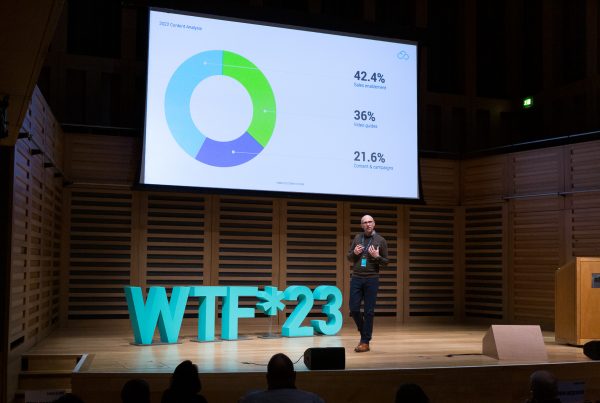So, you’ve joined our channel partner programme, enjoyed the TelcoSwitch Academy schedule, and now you’re ready to deliver something similar for your own customers.
It’s a crucial step, as without sound knowledge, they’re lacking key insight required to successfully use and administrate their new communications tools, so it’s vital that products are being presented with clarity, and above all else, conviction.
But training is boring, right?
Well, not always, especially if you can encourage your participants to embrace it, rather than just complete it because they have to.
Here, we have explained how people can get the most from your telecoms training, along with professional insight from our very own training manager, Martin Lippiatt.
Why is customer training important?
 Delivering the right training to both users, and perhaps more importantly, to the IT staff and administrators of your system is a vital step in the implementation process for many telecoms businesses.
Delivering the right training to both users, and perhaps more importantly, to the IT staff and administrators of your system is a vital step in the implementation process for many telecoms businesses.
But it’s sometimes a step that many organisations overlook, taking for granted that customers will put aside time to learn features and benefits themselves – remember, the first time most employees and management of your customer will see your solution in action is the first time they’re invited to use it.
Making sure administrators are effectively trained will also help you to minimise tickets raised with your first line support – and should help with the customer satisfaction observed by your customers.
You also have a brand to protect, so it’s vital to enable delivery of training that maintains your reputation as trusted software providers.
Make things interactive
 The last thing people want is long-winded PowerPoints, jammed with static words and images.
The last thing people want is long-winded PowerPoints, jammed with static words and images.
Let them get involved, and by that, we mean opening the actual software for use and explaining things whilst features are being engaged with.
This plays into the adage of learning through failing, which certainly applies to software, where even the geekiest engineer may need to experience shortcomings before mastering new platforms.
Martin’s thought’s:
“Going in depth on the overall user experience is important.
I have found that allowing audience members to use the software during sessions is the most effective way of getting them to learn it.
People see the software first hand and get a sense of things for themselves as they happen
A good training session will be interactive, providing participants with an opportunity to ask questions based on their own experience.”
Tailor your training
 You’ll meet people at comparative stages of their journey.
You’ll meet people at comparative stages of their journey.
While certain IT and support staff in your customer’s business may have worked in this industry for years, and simply need guidance on your specific procedures, others will desire more comprehensive, technical training, which elevates them from ground zero, into a fully accomplished member of support.
Other users may simply use your platform as a tool to enable their day-to-day roles, so consider the elements that will be most important for them and get there as quickly as possible to keep them engaged.
Martin’s thoughts:
“Participants may be seeing things for the first time and be unfamiliar with the subject matter, so aspects of the training may need repeating.
A different angle or method of communication may also be required for the content to be understood.
Sometimes you need to come up with analogies and examples to help or confirm their understanding.”
Clearly explain what’s expected
 It’s in your best interest for participants to understand the deliverables of their session.
It’s in your best interest for participants to understand the deliverables of their session.
This includes any knowledge or ideas they are expected to bring themselves, so make it clear what you want from them, and how they can achieve this.
A well-defined synopsis should be among the very first things they’re exposed to, without which, they’re lacking clear expectations of what they’ll be learning, and what you consider to be a ‘successful’ session.
Martin’s thoughts:
“Setting objectives before the session will ensure everyone knows what needs to be achieved, so that training requirements are met – I will often begin a training session by providing context on the subject that is being covered.
I will discuss why the software exists, how it came to be developed and the benefits that it brings to the people that have already adopted it.”
Break things up
 Brain overload is never a good thing.
Brain overload is never a good thing.
Don’t overwhelm people with too much information at once, but instead, deliver training in stages, obviously starting with the basics, and working your way towards more complex aspects behind any software.
For example, particularly for IT experts learning a cloud-based UCaaS system for the first time, getting to grips with the origins of telephony is strongly advised before more technical sessions relating to VoIP, hosted solutions, or even UCaaS itself.
Martin’s thoughts:
“Never assume what your participants know or do not know before a session starts.
It can often be hard for people, especially in a group setting, to ask questions – particularly if there is an assumption that ‘everyone else knows this already’.
Make thing simple, give plenty of opportunities to ask questions – but don’t be afraid to skip things if its obvious you’re covering old ground.”
Provide refreshers
 Telecoms is constantly evolving, so training never really stops.
Telecoms is constantly evolving, so training never really stops.
What’s current today, could be obsolete tomorrow, which is why people need regular access to a channel partner portal, offering them contemporary sessions that dive into emerging technologies.
For context, just think about how rapidly AI has found its way into contact centres, and for this very reason, intelligent call routing, data analytics and sentiment evaluations must be grasped as more customers demand these features.
Martin’s thoughts:
“Refreshers are needed at least once a year.
This is important as regular updates are made to all kinds of software, which advance functionality, fix bugs, and improve security or performance.
Extra features can also be added, and some legacy features that are no longer required can be taken away, which means the general user experience can change over time.
It is important that your knowledge of the software is current, and you can see how things have evolved over time.”



